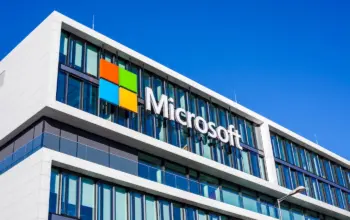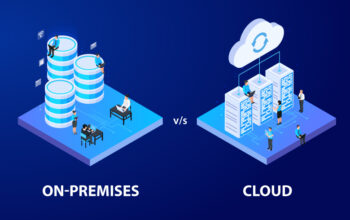Server Maintenance provide valuable understanding into the effectiveness of your infrastructure, enabling informed decisions to optimize system performance. Therefore, effective server maintenance monitoring system is essential to provide a beneficial and high-performance server for your need. Also, monitoring is part of vital parameters such as CPU utilization, memory usage, disk usage, and network usage in real-time enables administrators to identify problems early. Based on this information alone, you can troubleshoot problems before they impact users and provide technical support. Moreover, this makes it easier to troubleshoot, optimize resources, and effective technical support.
Why Server Monitoring is Important for overall server performance?
As the server itself being a core component of administration, performance monitoring is most important part in ensuring that servers and applications hosted thereon run optimally. Through this procedure, tracking, monitoring, and measurement of numerous performance parameters are made to determine impending bottlenecks, streamline utilization of resources, and reduce downtime risks.
Here are reasons why server performance monitoring is essential:
- Performance monitoring helps identify bottlenecks and underutilized resources.
- Monitoring data can help you predict future capacity needs of expanding or cutting storange according to company need.
- With tracking key security indicators, when unauthorized access attempts or suspicious activity are detected, you can respond fast and accordingly.
- By monitoring server maintenance performance, you can avoid costly downtime and data loss.
- When problems occur, server performance monitoring data helps you quickly identify the root cause and resolve the problem to avoid further damage.

Server Maintenance Metrics for Monitoring
This is list of metrics that provide information about how server maintenance performance is measured for monitoring purposes:
Proactive Problem Identification
Continuous monitoring enables prompt identification of upcoming problems, enabling them to be resolved rapidly before they affect users or applications hosted.
Optimization of Resource Utilization
Monitoring server performance statistics enables administrators to spot wastage, redistribute resources, and optimize server utilization.
Capacity Planning
Historical performance statistics enable planning for future infrastructure requirements so that upgrades or expansions are planned in advance to prevent services from being disrupted.
Enhanced Security
Tracking security-related statistics, such as unauthorized access attempts into the system or other abnormal actions, allows for instant response to possible threat.
Cost-Effectiveness
Through the prevention of downtime and maximized utilization of resources, businesses can reduce operational cost. For example, VPS setting adjustments for small businesses can be cost-effective.
Root Cause Analysis
When performance issues are experienced, tracking data on the server allows for immediate identification, hence effective remediation measures as well as permanent solutions.

Critical Server Maintenance Performance Indicators
Monitoring crucial server maintenance performance measures provides important feedback about system well-being. Though this is not an exhaustive list, the below should be watched on a consistent basis:
CPU Utilization
Monitoring CPU utilization is essential to assess processing performance. If CPU utilization is routinely high, resource exhaustion may be present, and hardware upgrade or load distribution to multiple servers may be necessary.
Memory Usage
Out of memory can lead to system crashes or slowdown in performance. Administrators can address this either by adding RAM capacity or saving memory by minimizing background processes.
Disk I/O and Storage Performance
Disk I/O readings track read and write operations on storage media. High disk activity can be a sign of inefficiency, and hardware upgrades or optimizations may be required to reduce disk-hungry processes.
Network Traffic and Data Flow
Traffic monitoring helps detect patterns and identify anomalies that could be indicative of security problems or bandwidth problems. Active network resource management allows trouble-free data traffic and congestion prevention.
Application Response Time
Application response time specifies the delay in time between the response of a system and user request. Repeated delay hints at performance bottleneck issues, for which either infrastructural enhancement or application optimization becomes essential.
Server Uptime and Downtime Monitoring
High availability is critical to service reliability. Monitoring uptime statistics helps identify system stability and the root causes of unplanned downtime.
Log Analysis for System Insights
Error logs hold valuable diagnostic information, enabling administrators to identify recurring issues and correct them. Log analysis on a periodic basis enhances system reliability.
Physical Server Conditions
Monitoring environmental conditions such as temperature and power supply safeguards the physical health of on-premises servers against hardware failure.
Practices for Server Monitoring
Managing servers in a virtual environment can be challenging because the system administrator cannot inspect the hardware for issues. Such Troubles especially arise while using a VPS, renting dedicated servers in remote data centers, or working with cloud services. However, if the servers are physically accessible to specialists the problem that cause may be differs depend on the situations. These guidelines for monitoring server performance and health:
Establish Performance Baselines
Having a baseline for key performance metrics provides administrators with a benchmark for identifying anomalies. Past performance patterns are reviewed to assist administrators in recognizing abnormalities and planning ahead for future requirements.
Track Key Server and Application Metrics
Tracking key performance indicators allows administrators to make connections between resource utilization and application response, leading to more informed decisions.
Use Automated Monitoring Tools
Manual monitoring is tedious and prone to human error. Automated tools streamline data collection, visualization, and alerting, making overall efficiency better.
Utilize Customized Alerts and Reports
Alert tuning ensures that critical issues are of top priority and excessive alerts are minimized. Automated reports provide useful feedback for constant optimization.
Make Use of Monitoring Data for Strategic Planning
Performance data from monitoring assists infrastructure planning, enabling proactive resource planning, software reviews, scaling plans, and disaster recovery planning.

Top Server Monitoring Tools
The choice of a suitable monitoring tool is important for good server management. Look at issues like resource optimization, deployment ease, and alerting features while comparing monitoring solutions. Some commonly used tools are listed below:
Zabbix
An open-source monitoring tool that monitors network parameters, server uptime, and system integrity. Includes automated discovery, distributed monitoring, and advanced reporting features.
Zabbix offers:
- Automatic discovery of servers and network devices.
- Distributed monitoring with centralized WEB administration.
- Server software for Linux, Solaris, HP-UX, AIX, Free BSD, Open BSD, OS X.
- High-performance proprietary agents (client software for Linux, Solaris, HP-UX, AIX, Free BSD, Open BSD, OS X, Tru64/OSF1, Windows NT4.0, Windows 2000, Windows 2003, Windows XP, Windows Vista).
- Agentless monitoring.
- Secure user authentication.
- Flexible user access rights.
- Flexible e-mail notification of predefined events.
- High-level (business) view of monitored resources.
- Audit log.
Nagios
A powerful IT infrastructure monitoring tool that offers both agent-based and agentless monitoring to enable real-time system performance and service availability analysis.
Nagios offers:
- Can monitor memory usage, disk usage, microprocessor utilization, number of running processes, and logs.
- It can also monitor services like Simple Mail Transfer Protocol, Post Office Protocol 3, Hypertext Transfer Protocol, and other standard network protocols.
- Can send email alerts when critical levels are reached based on defined parameters and thresholds.
- Can be configured with both agents and agentless options.
Datadog
Cloud-based monitoring tool offering an in-depth performance analytics of servers, containers, networks, and applications. Custom dashboards and machine learning-driven alerts enable enhanced operational efficiency.
Datadog offers:
- It supports a wide range of operating systems and applications.
- It offers customizable dashboards for visualizing metrics, events, logs, and traces to aid in troubleshooting and server performance analysis.
- The tool provides machine learning-based services that minimize noise and false positives in fault detection systems.
New Relic
SaaS-based platform offering application performance monitoring, real user experience monitoring, and system-level analytics for an end-to-end understanding of infrastructure health.
New Relic offers:
- Application performance monitoring with deep insight into transactions, errors, throughput, etc., across web, mobile, and distributed applications.
- Tracking server metrics such as CPU, memory, disk usage, load averages, processes, etc., across physical, virtual, and cloud hosts.
- Capturing real user monitoring data directly from browsers to see real user experience.
- Detection and diagnosis of application errors and exceptions using stack tracing.
- Dashboards to visualize application performance, transactions, errors, servers, etc.
- Setting up alerts using custom metrics and attributes with the ability to send email notifications.
- Tracking AWS, Azure, GCP, and database resources with integrations.
- Distribution requests across servers for microservice architectures.
Observium
An open-source network monitoring tool providing detailed information on network infrastructure performance, with automatic device discovery support and customizable alerts.
Obeserverium offers:
- Is an open-source network monitoring and management platform that provides comprehensive visibility into your network infrastructure.
- Automatically detects devices on your network and adds them to your monitoring system.
- It supports various devices from various manufacturers, including Cisco, HP, Dell, Juniper, and others.
- It continuously monitors devices to collect real-time server performance data, such as CPU utilization, memory usage, disk I/O, and network traffic.
- Offers customizable dashboards for creating personalized status and server performance reviews
- Allows configuring alerts and notifications for exceeding thresholds or specific events.
- Has a plugin architecture that enables you to expand its functionality and provide support for more devices or protocols.

In summary, it is important to have an effective server performance monitoring plan to ensure system efficiency, reliability, and security. Monitoring critical performance metrics, utilizing the correct monitoring tools, and stand by to the best practices for allowing your organizations to be able efficiently identify possible issues in advance and optimize available resources.
Server maintenance performance monitoring metrics should be chosen based on the needs and goals of the server administrator and projects. They should focus on critical metrics like resource utilization, response time, and error rates. Hence, your system of server monitoring must be aligned with organizational goals, focusing on main performance indicators like resource usage, response time, and error rates.
With use of tool for automation such as AI powered hosting and predictive analytics can also boost the effectiveness of your monitoring system by lowering downtime and increasing operational efficiency. Therefore, regular review and optimization of monitoring strategies ensures infrastructure is hardened and adaptable to technology and business change.
















